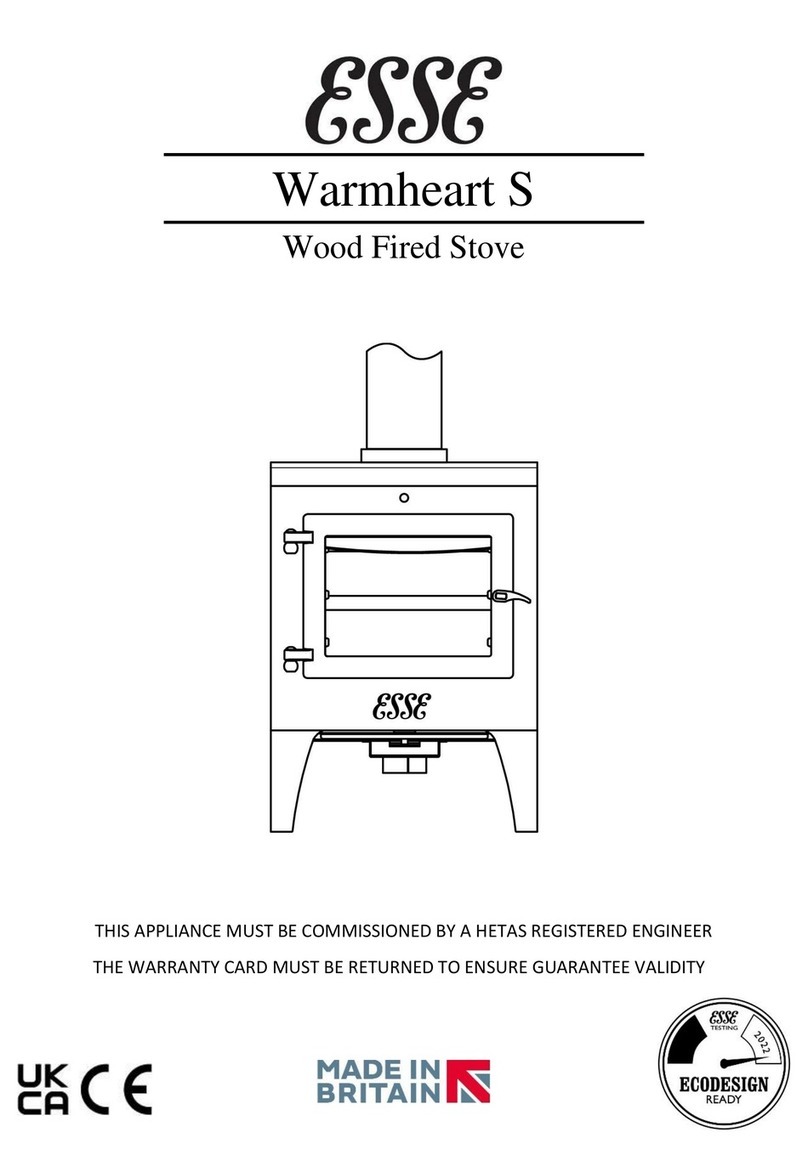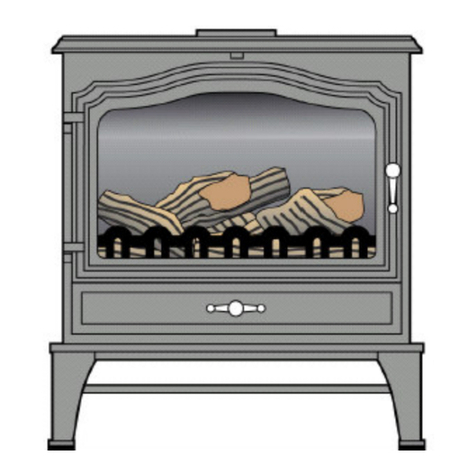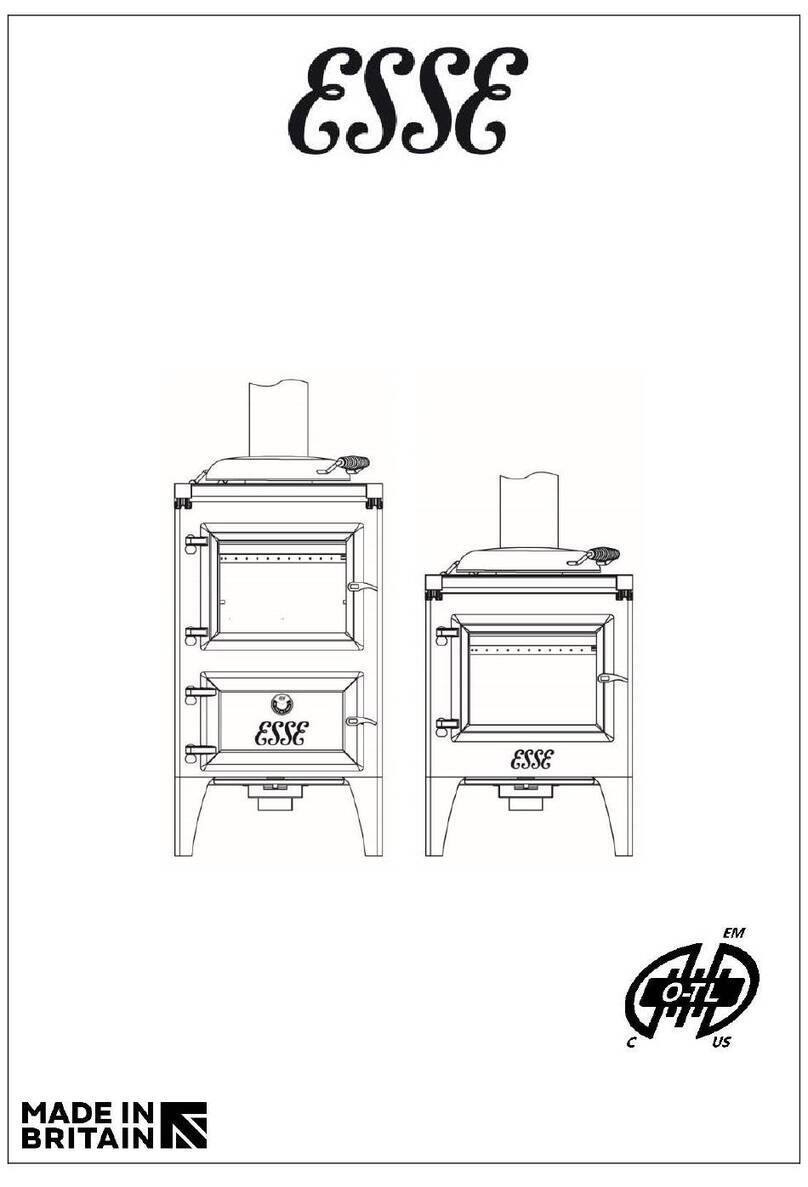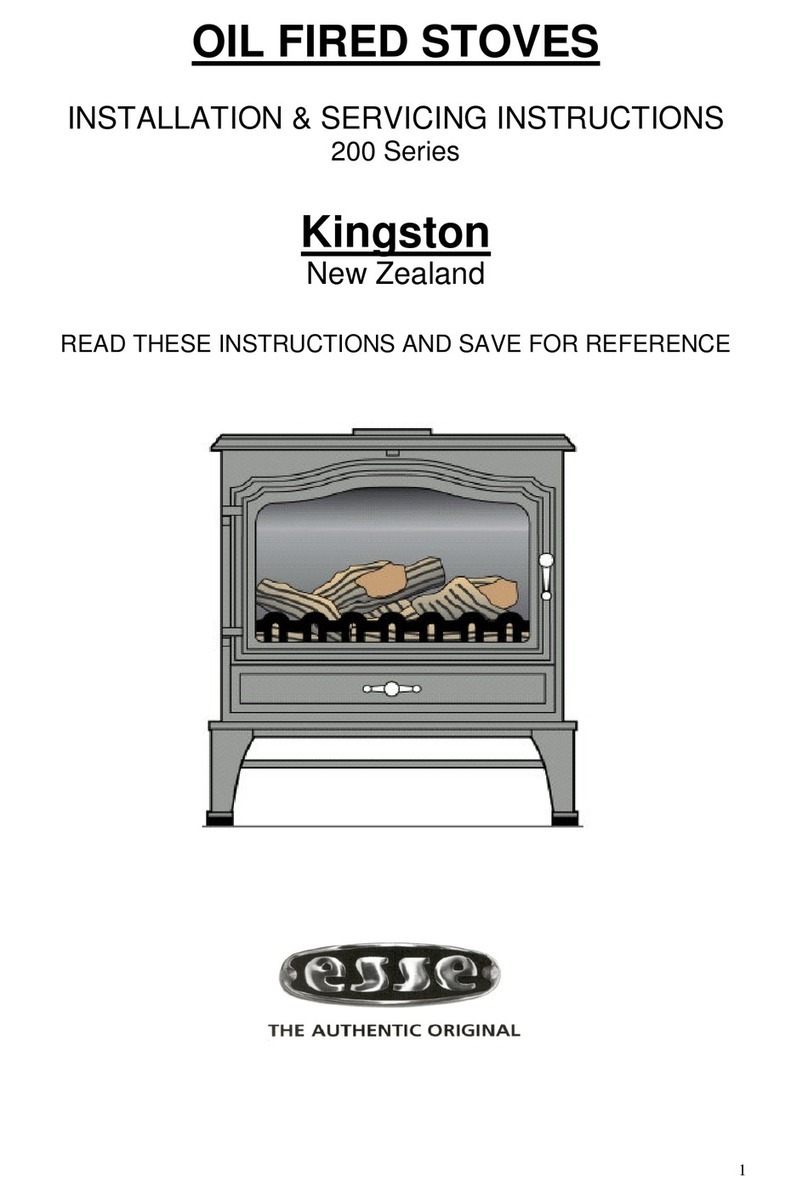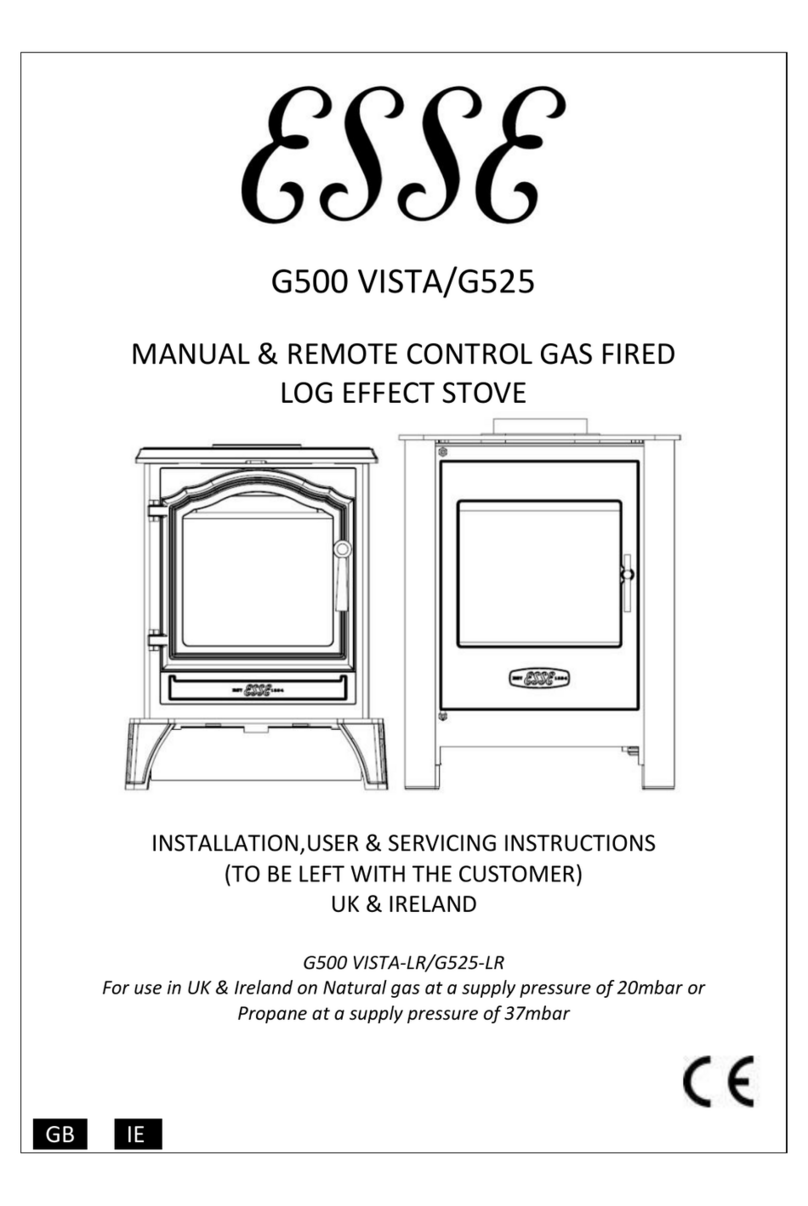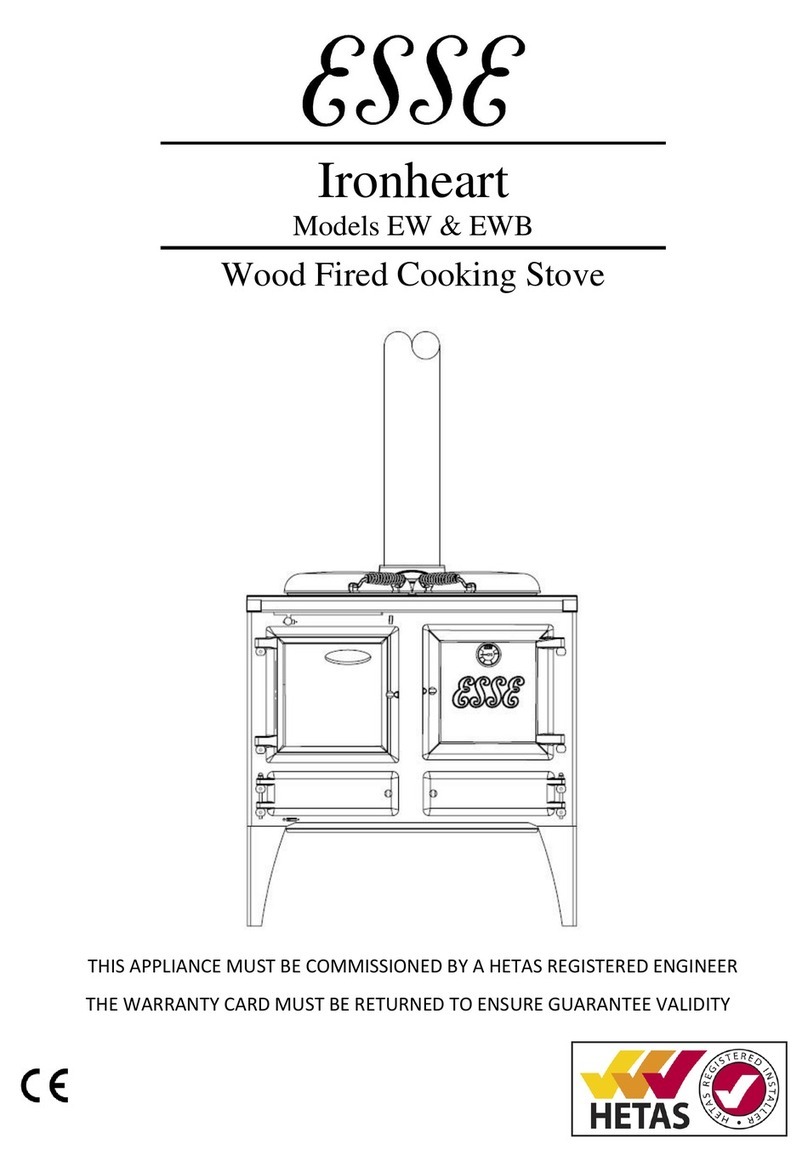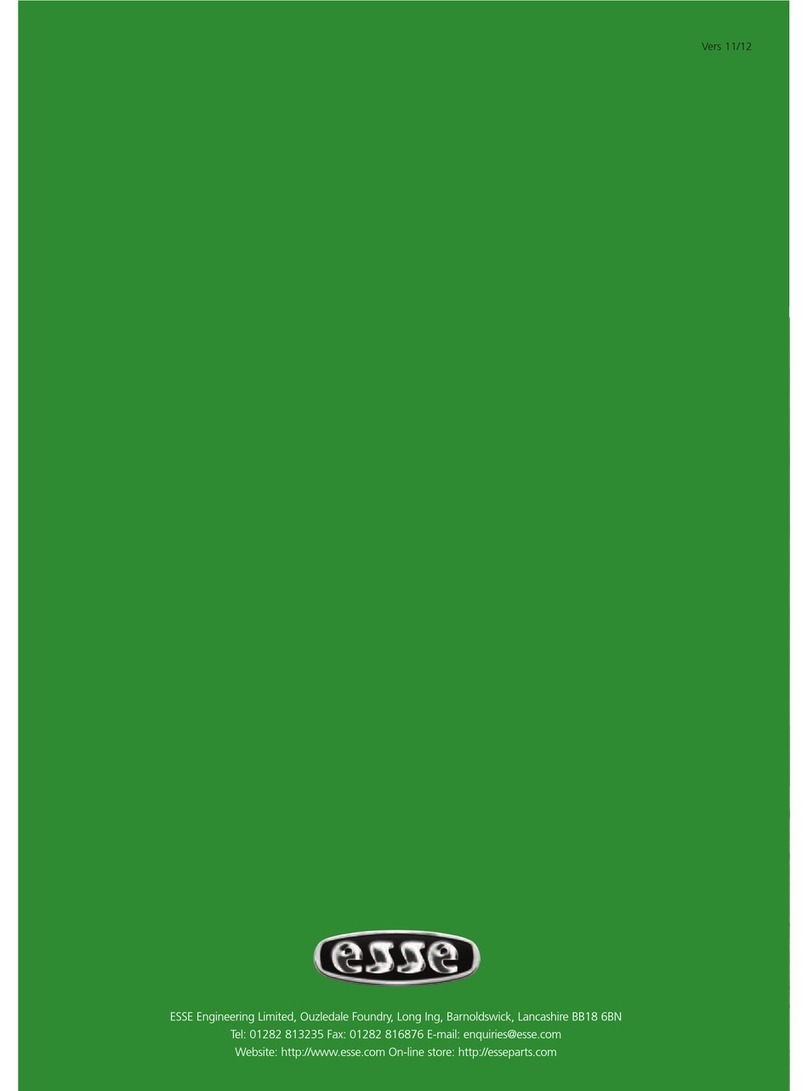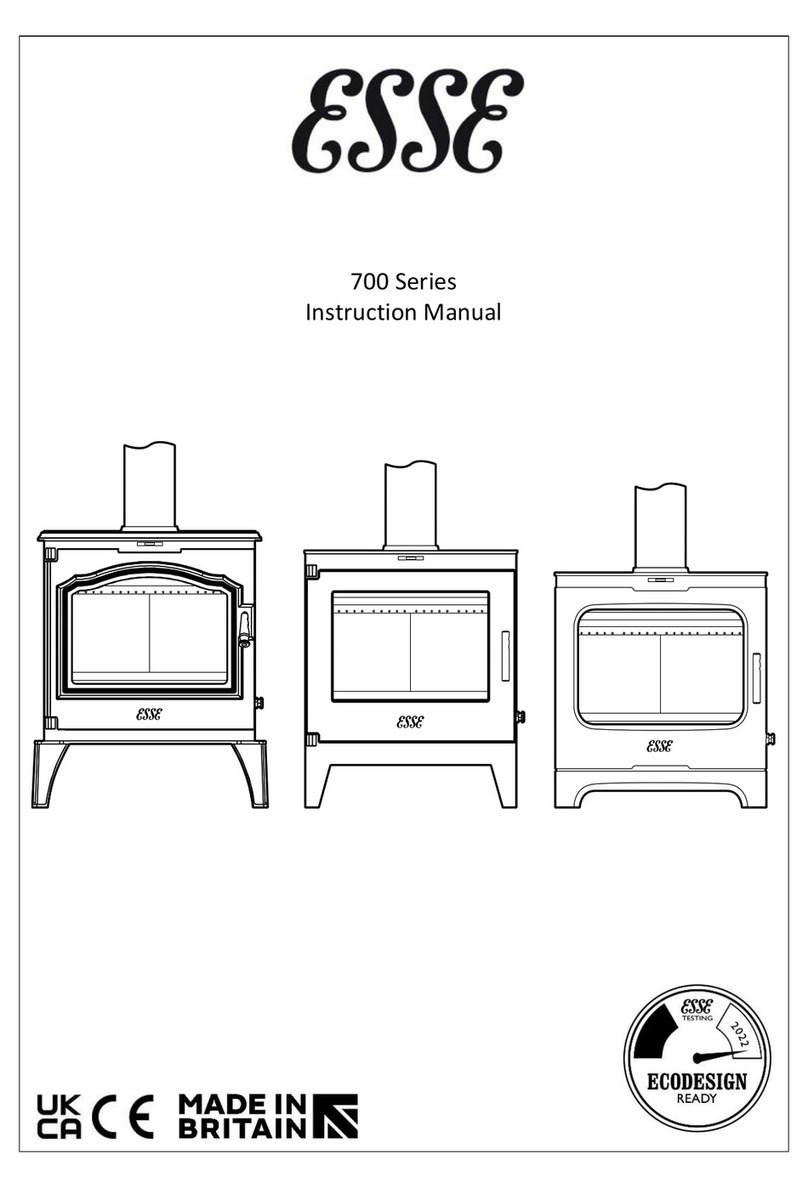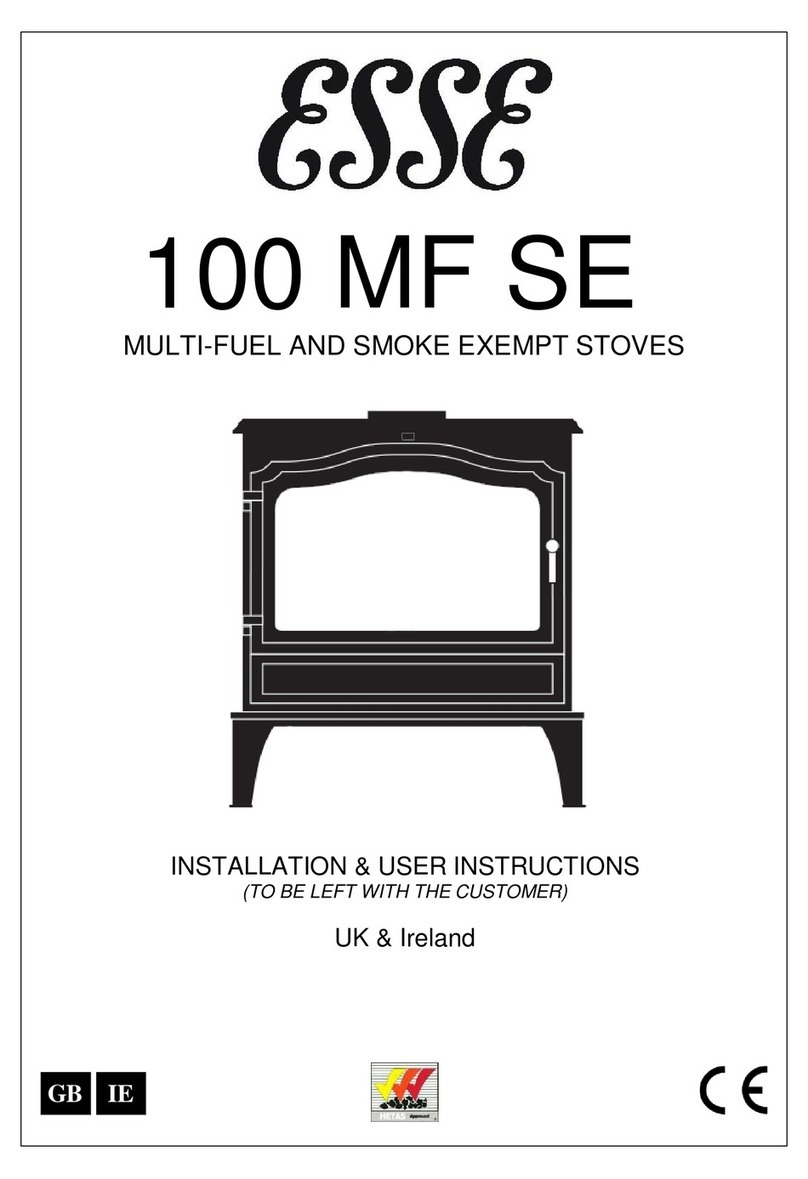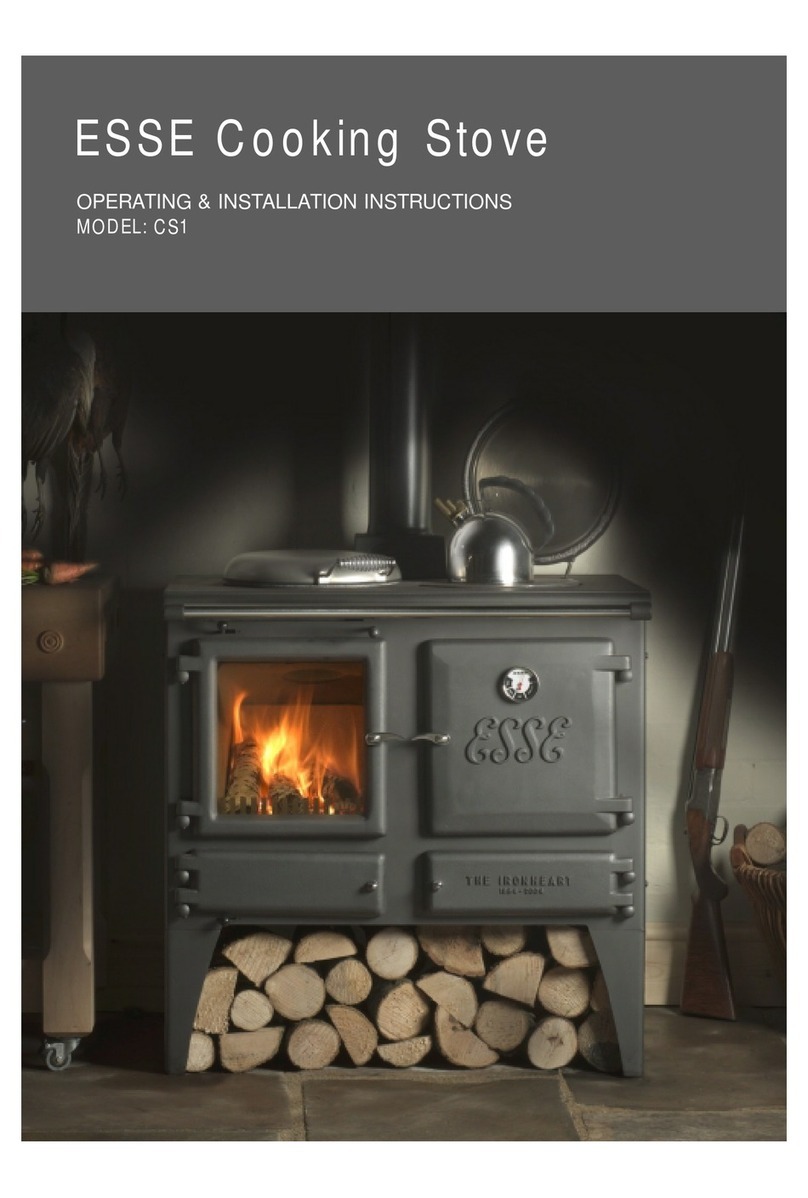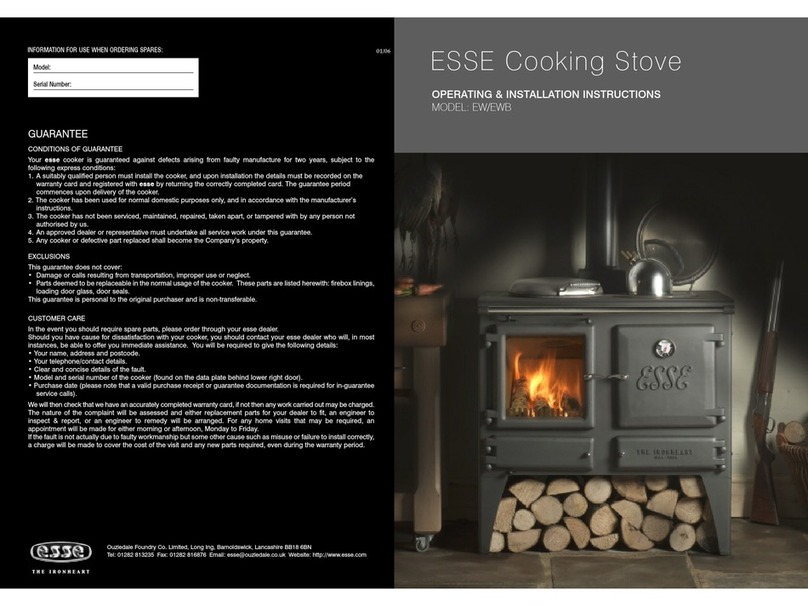
FLUE DRAUGHT READING
Two flue draught readings should be taken, one with the cooking stove at minimum firing rate and one
at maximum firing rate. The flue draught test hole must be drilled in the flue pipe as close to the
cooking stove as possible and before any flue draught stabiliser.
MINIMUM
The cooking stove should be lit and allowed to warm the flue thoroughly. The air controls can then be
set so that the cooking stove burns on a low setting. Allow the burning rate to become steady. The flue
draught reading should now be taken with the primary air intake closed and the secondary air control
fully open. The minimum flue draught required is 12 pascals (0.05” w.g.).
MAXIMUM
The primary air intake can now be opened to allow the cooking stove to burn at maximum rate. Give
the cooking stove some time for the burning rate to become steady and then close the primary air
intake. ake sure the secondary air control is fully open and take a flue draught reading immediately.
The minimum flue draught required is 12 pascals (0.05” w.g.).
The maximum is 24 pascals (0.1” w.g.).
FLUE DRAUGHT
The chimney can be checked, before the cooking stove is installed, with a smoke match. If the
chimney doesn’t pull the smoke it may suggest the chimney needs attention (see the Flue Diagnosis
Table below and the flue performance diagrams on page 6).
4 5
Note: This test is only a guide as an apparently poor flue may improve once the cooking stove is
installed, lit and the flue is warmed. Once the cooking stove is installed, a flue draught reading
should be taken.
High flue draught symptoms: fire difficult to control, fuel will not last, cooking stove too hot, cooking stove damage, chimney fire
Cause
External wind conditions combined with chimney terminal
Remedy
Fit stabilizer cowl. Fit flue draught stabilizer.
Low flue draught symptoms: difficult to light and smoke coming into the room.
Cause
Cold chimney
Chimney too short
Down draught
Chimney diameter too large
Chimney obstruction
Restricted air supply
Remedy
Line the chimney
Extend the chimney
Relocate/extend chimney terminal. Fit an anti down
draught cowl
Line the chimney
Clear/sweep the chimney
Check for competing draughts (other chimneys,
extractor hoods/fans). Fit an air vent if the room is
sealed.
The successful operation of this appliance is entirely
dependent on the adequate performance (pull) of
the chimney or flue to which it is connected. A
partially blocked or dirty flue can have disastrous
implications for an otherwise perfectly installed
ESSE as can be seen here looking at the underside
of the hotplate from 2 identical ESSEs.
A) Has been used regularly for over a year
following simple ESSE maintenance guidelines
(supplied with this appliance) and with a clean flue
drawing correctly.
B) Was just 6 weeks old when the picture was
taken and shows how quickly tar deposits will build
up if the flue performance is poor and clogged with
old soot as it was in this case.
THE I PORTANCE OF A HEALTHY FLUE
Good draft & clean flue
Efficient wood burning, clear
flue ways, minimal soot and
no tar deposits.
Poor draft & dirty flue
Inefficient wood burning,
blocked flue ways, lots of
soot and tar deposits.
A
B
lIt should have an internal cross section of no
less than 320 cm.sq (200mm dia.) If a flueliner
is used, it should be 6” diameter and be
made of suitable material for burning wood).
The flue diameter is 6”.
lVoids in the chimney should be avoided, as
these will prevent a steady flue draught. The
appliance flue pipe should pass beyond the
narrowing of the chimney.
lBe terminated at least 1m above roof level
so that the chimney does not terminate in a
pressure zone.
lIf the appliance is installed as a freestanding
appliance, it should not support any part of the
chimney.
lBe connected to this one appliance only.
lBe free from cracks, severe bends, voids
and obstructions.
lNew chimneys must be in accordance with
local regulations.
lThe chimney must be capped to prevent
ingress of rain.
lA flue/chimney access point may also be
required so that the state of the chimney can
be checked and any fallen soot removed.
lExternal flues must be insulated to prevent
heat loss.
lDo not fit an extractor fan in the same room
as the appliance.
lBe a minimum 4.6m high from hob chimney level
to pot.
Note: The chimney / flue to which this appliance is being connected must be swept and examined
for soundness prior to installation. Remedial action should be taken if required, seeking expert
advice if necessary. Where the chimney is believed to have served an open fire installation it is
possible that a higher flue gas temperature from a closed appliance may loosen deposits that
were firmly adhered, with the consequent risk of flue blockage. It is therefore recommended that
the chimney be swept a second time within a month of regular use after installation.
The successful operation of the cooking appliance relies on the adequate performance of the chimney
to which it is connected. The following chimney guidelines must be followed:
CHI NEY AND FLUE INFOR ATION

